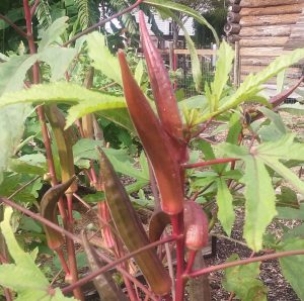From UF/IFAS BLOGS
Agriculture Faculty, University of Florida, Extension-Osceola County
Home Gardening = Food Security

Gardening is a great way to get some exercise, relieve stress, eat
healthier, and increase your food security. And while some of us have
always enjoyed gardening, it’s great to see a whole new crop of
gardeners is emerging as people find themselves spending more time at
home.
It’s late spring in Central Florida, and we can still
plant many warm-season vegetables. Okra is a heat-hardy Southern
favorite that anyone can grow. It is high in Vitamin C, fiber, and
flavonoids. It’s also an attractive plant with lovely flowers. Okra is
in the same family as cotton and hibiscus. This vegetable was
originally brought to the Americas by enslaved Africans. Florida-grown
okra is harvested commercially March – November.
Grow your own Okra
I’d
recommend a minimum of six plants to be able to harvest enough at one
time to cook. Okra varieties include spineless (‘Clemson Spineless’),
Heirlooms (‘Emerald’, ‘Silver Queen), red leaves and flowers (‘Alabama
Red’, ‘Burgundy’), and compact types suitable for container-growing
(‘Baby Bubba’, ‘Jambalaya’).
Plant okra seeds directly into your
growing location. In sandy soil, irrigate daily during warm weather.
Fertilize once plants are a few inches tall.
Cut okra pods when
they are about three inches long. Okra grows fast, and once the plants
start producing, you must harvest daily to prevent the tender pods from
growing into inedible, woody ones. Okra flowers are also edible!
Harvesting and eating
Once harvested, okra can be stored dry in an open plastic bag in the refrigerator for only a few days.
Okra
is usually eaten here breaded and fried, or in gumbo, but there are
many creative ways to enjoy it. Very small pods are great eaten raw.
Okra can be sautéed, roasted, or even cooked into marinara sauce and
served on pasta. I’ll admit I never liked okra much until I had it in
some Indian and African dishes that use rich seasonings and make the
most of this mucilaginous vegetable. If you have more okra than you
want to eat fresh, you can pickle it, or simply trim stems, blanch,
bag, and freeze. Flowers can be eaten raw or fried.
For gardening and farming information and education, contact UF IFAS Extension-Osceola: http://sfyl.ifas.ufl.edu/osceola/
|
|
